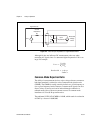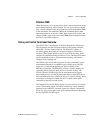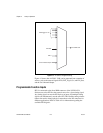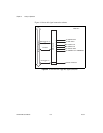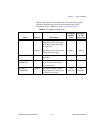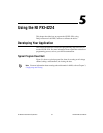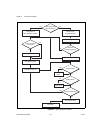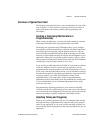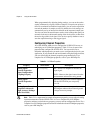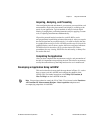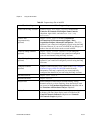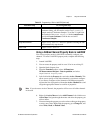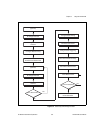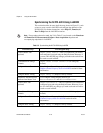Chapter 5 Using the NI PXI-4224
© National Instruments Corporation 5-3 NI PXI-4224 User Manual
Overview of Typical Flow Chart
The following sections briefly discuss some considerations for some of the
steps in Figure 5-1. These sections are meant to provide an overview of
some of the options and features available when programming with
NI-DAQmx.
Creating a Task Using DAQ Assistant or
Programmatically
When creating an application, you must first decide whether to create the
task using the DAQ Assistant or programmatically in the ADE.
Developing your application using NI-DAQmx allows you to configure
most settings such as measurement type, selection of channels, input limits,
task timing, and task triggering using the DAQ Assistant tool. You can
access the DAQ Assistant either through MAX or through your NI ADE.
Choosing to use the DAQ Assistant can simplify the development of your
application. When using a sensor that requires complex scaling, or when
many properties differ between channels in the same task, NI recommends
creating tasks using the DAQ Assistant for ease of use.
If you are using an ADE other than an NI ADE, or if you want to explicitly
create and configure a task for a certain type of acquisition, you can
programmatically create the task from your ADE using function or VI calls.
If you create a task using the DAQ Assistant, you can still further configure
the individual properties of the task programmatically using function calls
or property nodes in your ADE. NI recommends creating a task
programmatically if you need explicit control of programmatically
adjustable properties of the DAQ system. Programmatically creating tasks
is also recommended if you are synchronizing multiple devices using
master and slave tasks.
Programmatically adjusting properties for a task created in the DAQ
Assistant overrides the original settings only for that session. The changes
are not saved to the task configuration. The next time you load the task, the
task uses the settings originally configured in the DAQ Assistant.
Adjusting Timing and Triggering
There are several timing properties that you can configure either through
the DAQ Assistant or programmatically using function calls or property
nodes in your application. If you create a task in the DAQ Assistant, you
still can modify the timing properties of the task programmatically in your
application.



